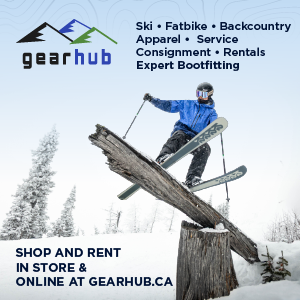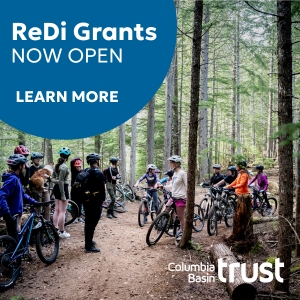
The Elk Valley Regional Land Trust (EVRLT) has put forth a proposal to establish a Conservation and Connectivity Corridor on the Western Slope of the Elk Valley at Fernie. Recognized globally as a crucial wildlife corridor linking the American and Canadian Rockies, the Elk Valley faces significant challenges due to substantial growth driven by resource, residential, and recreational development. This growth threatens wildlife movement and the ecological function of the valley.
The EVRLT aims to address these challenges by creating a unified conservation and connectivity zone adjacent to Fernie. The Trust plans to collaborate with Indigenous partners, the Crown, landowners, funders, and other stakeholders to develop and execute this proposal. They seek Expressions of Interest from interested parties to achieve their objectives by September 2025.
The proposal outlines the ecological importance of the Elk Valley as a genetic bridge supporting wildlife connectivity and maintaining genetic diversity. It highlights the increasing threats from development activities and emphasizes the need for preserving wildlife corridors to prevent habitat fragmentation.

Key studies and assessments support the proposal, identifying significant conservation values and the ecological necessity of the Western Slope corridor. The Trust aims to acquire, lease, or secure agreements for the necessary land parcels, ensuring long-term protection and sustainable management.
The project requires substantial funding, collaboration with multiple stakeholders, and adherence to ecosystem-based management principles to maintain biodiversity and ecosystem health.
I met with Kevin Laroche, the EVRLT Executive Director, and asked him a few questions about the proposal. Kevin began his work on conservation in the Elk Valley 20 years ago, helping to develop land use and stewardship agreements between user groups and landowners. Kevin maintains the Trust’s relationships and works with various partners, including user groups, conservation organizations, foundations, donors, governments, and experts. He is responsible for the Trust’s day-to-day operations and, with the Directors strategic planning.

Here are the questions and Kevin’s answers regarding the Conservation and Connectivity Corridor Proposal:
Q: Can you explain the critical ecological role of the Elk Valley as a connectivity corridor and its global significance?
A: Healthy wildlife populations require genetic diversity. Populations need to be linked and connected to one another, not isolated. The Elk Valley has provided critical linkage between the American Rockies and their Canadian counterparts for thousands of years. In doing so, the Valley itself became an important assemblage point for elk, grizzly, black bear, and dozens of other species. Like the neighboring Flathead Valley, the Elk Valley functioned as the “spine” of the Rockies, linking populations as far south as Wyoming to populations as far north as the Yukon. Telemetry evidence is especially helpful in telling the connectivity story. Members of the public can find a summary of that evidence on pages eight and nine of our “Proposal and Plan to Establish a Conservation and Connectivity on the Western Slope,” which is available at: Proposal and Plan to Establish a Conservation and Connectivity on the Western Slope
Q: What are the main threats to wildlife movement and habitat connectivity in the Elk Valley due to current and future development?
A: The three primary threats to wildlife movement and connectivity in the Elk Valley are (i) residential and industrial development up the valley slopes, (ii) collision risks on Highway #3, and (iii) attractants such as fruit trees and incorrectly stored waste.
Q: How does the proposed Western Slope corridor address these threats and ensure the preservation of critical wildlife habitats?
A: The West Slope Corridor will address the threat to connectivity caused by upslope urbanization by setting aside an area about 7 km long and averaging 1.35 km wide (approx. 1,000 ha or 2,470 ac) which will be reserved and managed for wildlife connectivity and conservation while permitting sustainable use by non-motorized users. The corridor will also serve as a zone for the better management of wildlife/human life interaction—a buffer, if you will, that can help us manage the problems that come with proximity.
Q: Can you elaborate on the collaborative approach the Trust intends to take with Indigenous partners, the Crown, landowners, and other stakeholders?
A: The Land Trust is a “big tent” organization. Everyone in the Valley has an interest in ensuring that we maintain healthy and vigorous wildlife populations. We are working with and will continue to work with recreationalists, conservationists, landowners, developers, and municipal, regional, and federal governments to arrive at a solution that preserves wildlife connectivity in the Valley and meets the needs of stakeholders, including landowners. That’s going to require a level of commitment between all parties. We think that the people of the Elk Valley are ready to make that commitment in a way that they never were before.
Q: What are the specific objectives the Trust aims to achieve by September 2025, and how will Expressions of Interest from stakeholders contribute to these goals?
A: It is an important objective of the Trust to have formalized expressions of support from all stakeholders by September 2025 or earlier. We set this as an objective because quietly or implicitly supporting the idea of a West Slope Corridor isn’t enough. Those days are done. We need to get this done. And in order to get it done, we need folks to come out of the shadows and commit. We have a plan. Now we need to achieve it. We need others—governments, funders, conservation groups, and user groups—to make that commitment with us.
Q: What were the key findings of Dr. Clayton Lamb’s study regarding wildlife connectivity in the Elk Valley, and how do they support the proposal?
A: Dr. Lamb’s key finding was that, notwithstanding present levels of urbanization and growth, there continues to exist a functioning wildlife corridor on the West Slope. He found that conserving the West Slope Corridor is an important objective in maintaining regional north-south connectivity, as well as local connectivity. He also found that our Area of Interest—the boundaries of the corridor as we have proposed it—are roughly commensurate with the functioning corridor. It can get bigger, but it certainly can’t get smaller.
Q: How does the Conservation Values Assessment conducted by VAST Resources Solutions contribute to identifying important habitats and species in the proposed corridor?
A: We all know that the Elk Valley is special. That’s why we’re here. One of the things that makes the Valley special is its resident wildlife. The VAST Conservation Assessment Study identified the West Slope as providing habitat for 22 sensitive species. That’s an extraordinary number for so small an area. Many of those species are present. The absence or presence of others awaits further study. The point to be taken is that the West Slope is important not only for connectivity purposes but, in and of itself, is an extremely important area for conservation.
Q: What are the primary land parcels within the Area of Interest (AOI), and what strategies does the Trust have for acquiring or securing agreements for these lands?
A: There are several kinds of tenures within the AOI. There are private parcels (EK, Shoesmith, and Galloway are examples), allocated crown parcels (such as the Mount Fernie Park), unallocated crown lands, and specific historical land claims. And all of these are within the territory of the Ktunaxa Nation. The Trust seeks to acquire, by purchase or donation, those private lands that it can acquire. In respect of lands it cannot acquire, the Trust hopes to obtain covenants from or enter agreements with the relevant landowners. The Trust’s method of prioritizing parcels focuses on (i) the immediacy of the threat and (ii) the existence of an opportunity to acquire, obtain a covenant, or enter an agreement. Areas under immediate threat of development take priority for acquisition by purchase, especially where the owners are prepared to transact at appraised fair market values.
Q: How does the Trust plan to balance conservation efforts with existing recreational uses of the proposed corridor area?
A: The Trust’s Board comprises representatives of conservation groups and representatives of non-motorized recreational groups, as well as legacy Directors. The Trust is a collaboration in the truest sense. The Directors have agreed on a “Conservation First” policy. That Trust’s “Conservation First” policy permits and encourages non-motorized recreational use, both historical and future, provided that the use does not conflict with a conservation or connectivity value that the Board, working with its scientific advisors and members of the Ktunaxa Nation, has identified as important. Where that conflict exists, the Board is obligated to call on scientists and other experts to determine the proper course of action. That might include, in a given instance, a time-limited closure, density of use restrictions, or time of day limitations. What matters is that these decisions are being made collectively, based on the best available scientific evidence, by a board that consists of a broad range of interests.
Q: What are the anticipated ecological benefits of establishing the Western Slope corridor in terms of biodiversity, climate change resilience, and maintaining genetic diversity?
A: They are many. We set out eleven benefits on pages 8 to 10 of our Plan, which anyone can access at Proposal and Plan to Establish a Conservation and Connectivity on the Western Slope. The first and most important benefit is that this is an opportunity to act, rather than just talk. Actually establishing a corridor will preserve north-south connectivity in the valley. It will link existing conservancies and wild lands. It will conserve habitat for 22 sensitive species. It will support sustainable recreation. It will provide an opportunity to address (rather than just talk about) cumulative effects. It will support highway risk mitigation by providing a bypass, around the city, for mammals crossing Highway 3. It will amplify and leverage the impact of adjoining crown lands.
Q: Can you provide more details on the Conservation and Connectivity Management Plan (CCMP) and the Conservation and Connectivity Cooperation Agreements (CCCAs) proposed by the Trust?
A: The Trust intends to manage the West Slope Lands that it acquires in accordance with a Conservation and Connectivity Management Plan (the Plan). Where the Trust cannot acquire lands, it hopes to enter Connectivity Cooperation Agreements with owners that incorporate the management principles set out in the Plan. The result will be a single zone, managed (so far as conservation and connectivity are concerned) according to a single set of rules. A draft of that Plan will be prepared by advisors retained specifically for that purpose. Among other things, the Plan will address principles articulated in the IUCN’s “Guidelines for Conserving Connectivity,” Indigenous stewardship values, local realities, and the facts “on the ground” within the corridor itself. The last point is critical. Every Connectivity Management Plan varies with local geography and conditions. The Trust is presently scoping the Conservation Connectivity Management Plan with its advisors.
Q: What funding strategies does the Trust have in place for both the acquisition of properties and the long-term operational costs associated with managing the corridor?
A: This is where it can all go wrong, and very quickly. Federal funding is key. Federal funding programs for land acquisition are few and far between. The process is competitive. We are engaged in that process and very hopeful that we will be in a position to announce major federal funding shortly. Federal funding generally provides no more than 25% of a project cost, but it is critically important. Federal funding is like angel investing in the high-tech or biomedical fields. It is critical because it provides validation and attracts other capital. In our case, we’re looking to two other sources for that other capital—senior conservancies and private foundations/philanthropists. We have had or are in conversation with senior conservancies in Canada and the United States. They have their priorities. We need to fit ourselves within those priorities. Private or foundation philanthropy is another matter entirely. It seems a bit silly to say, but private philanthropy is private. The real struggle is to get in front of folks who are in a position to make significant (six or seven figure) contributions. Put a little bit differently, private philanthropy at this scale is built on relationships. We need to find local folks who have those relationships and are willing to make necessary introductions.
Q: How does the proposal align with the broader goals of the B.C. Biodiversity and Ecosystem Health Framework?
A: The BC Biodiversity and Ecosystem Health Framework is new and so not fully defined. We are hopeful that the Framework will help set the tone when the time comes to sit down with the provincial government to negotiate Connectivity Cooperation Agreements in respect of the Crown lands which fall within the corridor and which lay to the west of it.
Q: What are the next steps for the Trust once the Expressions of Interest are gathered and initial agreements are in place?
A: The Trust is organized in such a way that it is able to react very quickly when opportunities present themselves. An opportunity has presented itself to acquire the EK (Alpine Trails) Lands at the north end of the corridor. The cost of acquiring and funding that land will be in the order of $7 million. The directors of the Trust are working as hard as they can to raise those funds by the end of the year. We expect to be in a position to report back to the people of Fernie on where we are with fundraising for that project by the end of August.
The EVRLT‘s proposal for a Conservation and Connectivity Corridor is a visionary plan to protect and sustain the Elk Valley’s unique wildlife and ecological functions. As the valley faces increasing threats from development, the Trust’s collaborative efforts with various stakeholders aim to create a sustainable future for the region. The success of this project relies on the commitment and support of the community and stakeholders alike. By working together, we can ensure that the Elk Valley remains a thriving, connected landscape for generations to come. Let’s take this opportunity to make a lasting impact on our environment and secure a better future for all species that call the Elk Valley home.
To read the proposal click here, and you have any questions, Kevin is available to ensure they are answered. You can contact him directly at kevin.laroche@elkvalleylandtrust.org.

























